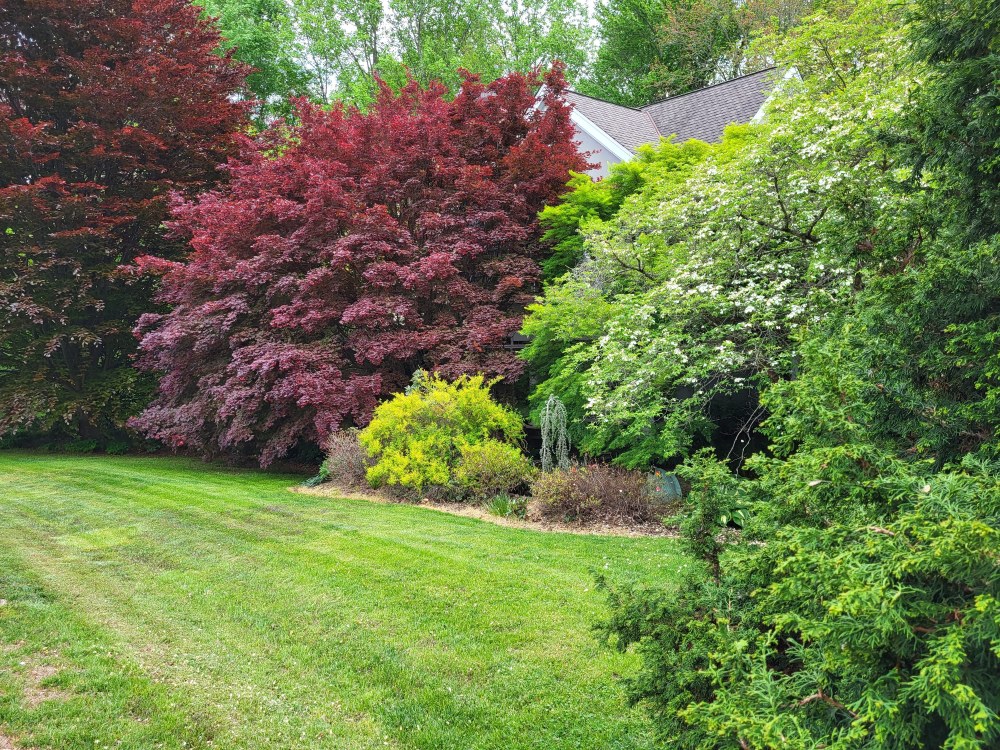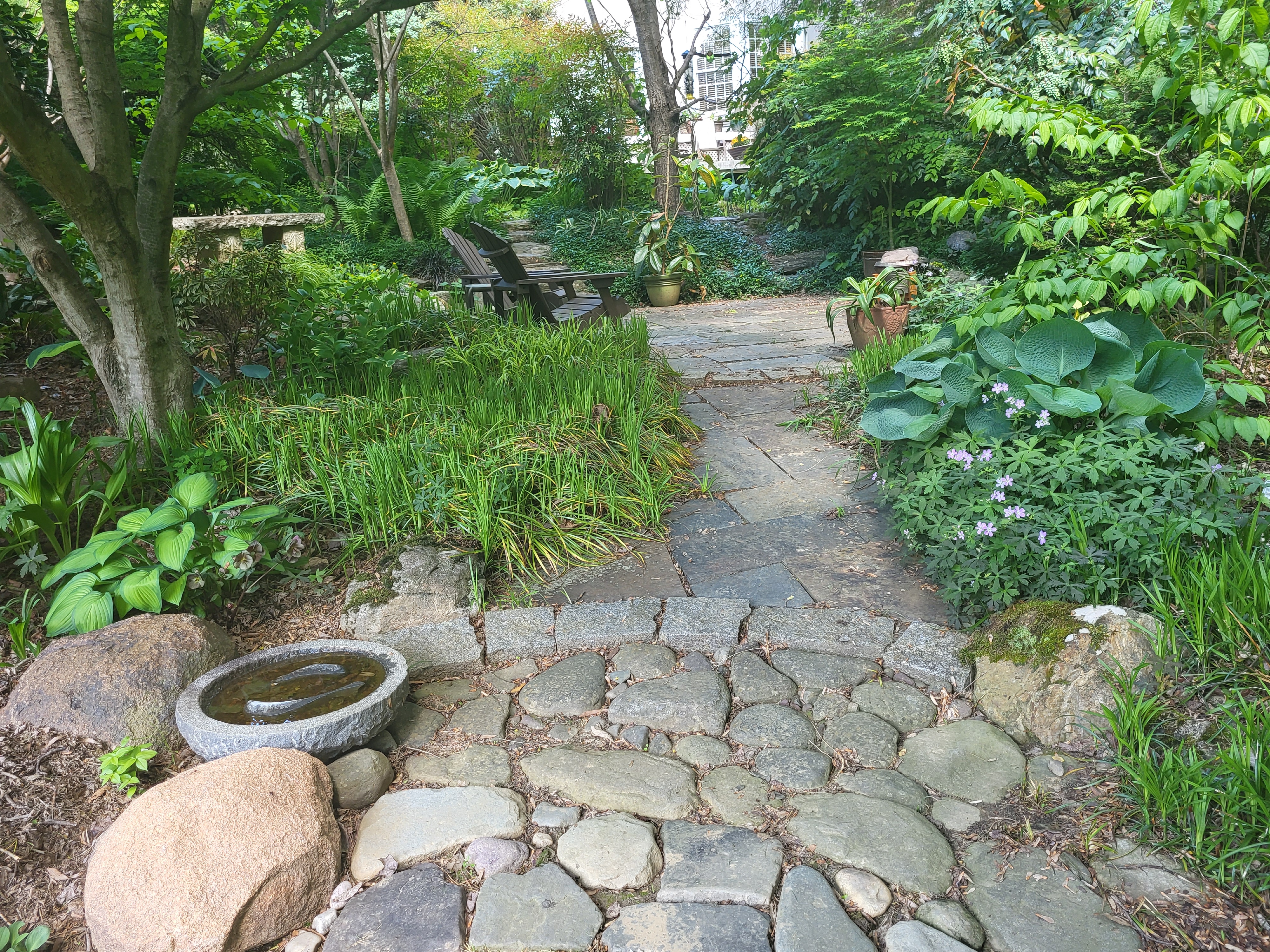Individual plants are most often featured in this garden, but occasionally I must sneak in the broader view. Admittedly, most rules in the design book have been ignored in the lustful pursuit of varied plants. Trees and shrubs are crammed together, colors clash, and no doubt there is an excess of variegated leaf plants. But, while acquisitions are often made with little forethought, I hope this is not judged to be only a collection of plants.

While purchases are often spontaneous, their planting is not, though there are times when compromises must be made. If I must have a Pagoda dogwood (or two), places will be found to plant them. But, rather than only lining out various Japanese maples or redbuds, the placement must please my eye. The quality of my eye is an open question.

While Barbara (my wife) will occasionally (rarely?) chip in to chop offending fronds of Ostrich ferns that stray across the stone paths, the care of the garden is exclusively up to me. For years, I’ve strived to eliminate as much maintenance as possible, so necessarily, this means covering as much ground as possible to minimize weeds. This, of course, suits my purpose to promote stuffing as many plants as possible into the garden.

When this property was purchased thirty-four years ago, I had two priorities. First, a short driveway to minimize clearing of snow (not that we get much). Many neighbors have long, hilly driveways. This one is short, with a slight incline. Second, I preferred a small front and large rear yard. This lot features both, and also, at the low end of surrounding hills with a small creek, the soil is siltier than the surrounding higher ground. This has proved ideal for planting.

Before purchasing, I paid little attention to the path of the sun, and with a swath of forest along the southeastern border, the garden is quite shaded. Of course, when the gardener plants dozens of trees that mature over three decades, this will necessarily add to the shaded conditions. After two mostly sunny gardens, I’ve learned to love the shade, though the competition from shallow roots is often an issue. Weeds are less prone to become problems, and while there are fewer flowers in the shade, I particularly enjoy varying foliage textures.

I make no effort to repeat plants through the garden (with the exception of the many collections), but I suspect my love of rocks is obvious. Besides two small rock gardens, boulders edge raised planting areas. Native ferns and coral bells (Heuchera) are plugged into crevices in the shade, with various succulents wedged into gaps in the sun.

Visitors remark that the garden has become a series of rooms, with one not visible from the other. I must admit, this is an unintended consequence of thirty-four years of planting, but also due to my preference for planting trees. While there are multiple blooms every day through the year, flowering plants are not the garden’s focus.
Love the wide angle view
Earlier in the spring the wide view can look a little empty. Not now, with more to come in a few days.
Beautiful!
Beautiful!! I also have been adding, relocating trees, bushes for 32 years. My husband says he sees the bushes shake as if they know they might get dug up at any time!! Thank you for your blog as I have enjoyed it for years
I’m thankful for the recent rains that eased the transplant for several large Mount St. Helens azaleas moved into a void when a long established deciduous holly mysteriously died. The azaleas were stuck in back of the huge camellias and couldn’t be seen, so while I regret the loss of the holly, the azaleas will be more prominent and in a few years will add to the mid-spring wall of color along with the yellow and orange azaleas.